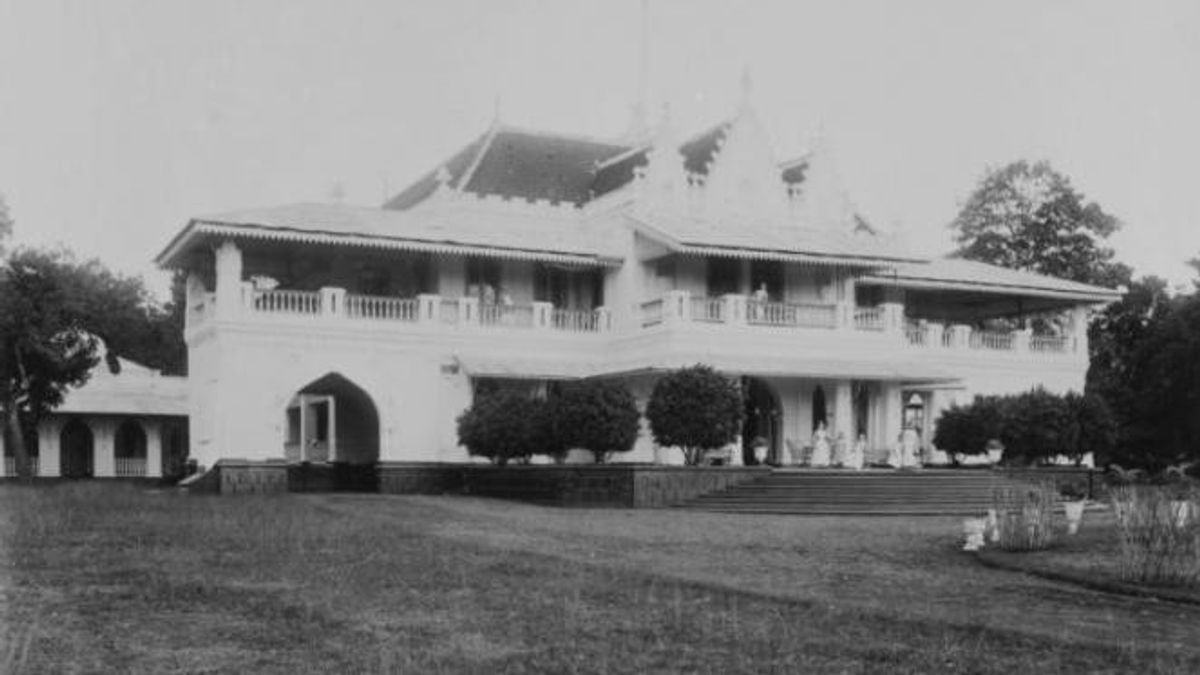JAKARTA - The threat of an epidemic is a frightening specter. Batavia (now: Jakarta) has experienced this. Ignore the Dutch trading airlines, the VOC became the estuary. Instead of caring for the environment, the VOC put forward massive development. Epidemics of cholera and malaria are also threatening.
Death everywhere. Hospital attendance is considered the answer. In fact not. Those who seek treatment instead of recovering, actually die. People also dub Batavia as the grave of the Dutch.
The city of Batavia is a clear example of the Company's neglect of the environment. The Dutch trading company only thought about profit. Environmental problems are considered lonely. The Company continued to build Batavia. Permits to clear land for agriculture and plantations continue to be granted. As a result, forest logging is getting more and more crowded.

This condition was exacerbated by the emergence of various industries that were sanctioned by the Company. From distilling wine, bricks, sugar, to gunpowder. The factories were built all over Batavia. This means that there is a lot of waste ready to pollute the river.
Never mind the Company, the Dutch who inhabited Batavia were equally ignorant. Moreover, they continue to perpetuate activities that damage the environment by throwing garbage and defecating on the banks of the river. In fact, they drink water from the Ciliwung river every day. Ignorance must be paid dearly.
The presence of the plague became an uninvited guest in Batavia. Outbreaks vary. Cholera and malaria are the main. The two plagues became the number one killer in Batavia. Even the plague knows no social status. Alias, anyone has the opportunity to be exposed to the plague and die. The death of the VOC Governor-General Dirk van Cloon (1732-1735) is an example.

“The VOC headquarters in Batavia now has a bad reputation as a source of deadly plagues that continued to be maintained until the 19th century. Fish ponds built along the coast. Batavia is an ideal breeding ground for Anopheles mosquitoes. Since 1733, the city has spread a deadly malaria epidemic. Between 1733 and 1795, some 85,000 VOC soldiers and officers in Batavia died from this plague and similar causes.”
“In 1734, a day of prayer and fasting was announced to ask God to remove the plague from this city. The request of the residents of Batavia, who was often regarded as immoral and unbelieving, did not change the situation. Disease continues to run rampant and resulted in the death of Governor General Dirk van Cloon,” said historian MC Ricklefs in the book History of Modern Indonesia 1200-2008 (2008).
House of DeathThe Company did not remain silent. They are trying hard to fight the plague. Several hospitals were alerted to treat their citizens affected by the outbreak. Bake away from fire. Hospitals are not the answer. Patients who come instead of recovering, in fact many of them died.
All that because health science has not made significant progress. Ignorance of the doctors who handle the epidemic, plus the absence of medicine, is the cause of the problem. In fact, not infrequently the drugs used for other diseases are applied to patients affected by the plague.
People in Batavia then dubbed the hospital as the house of death. Daily deaths can reach dozens of people. The narrative makes people reluctant to go to the hospital. After all, coming to the hospital while taking life.

Other options (besides the hospital) are options. Many of the rich and very rich came directly to the house of a doctor who was believed to be able to concoct a cure for cholera or malaria. Sometimes, they do not care about the educational status of the doctor who treats them.
If the ophthalmologist said that he could mix medicine to recover from the plague, the doctor would be visited by many. For those who have not been hit by the epidemic, the only preventive step that can be taken is to immediately move to surrounding cities that are still safe.
The plague disaster finally became evidence that the Company failed to build Batavia. The bad narrative of Batavia facing the plague was perpetuated by travelers from abroad. Therefore, Batavia is also closely dubbed the graf der Hollanders or the graves of the Dutch people.
“In Batavia, it was surprising how many patients were hospitalized considering the small population of Europe, how important it was to have an institution like an orphanage.”
"But it must also be remembered that the high death rate of adults due to ill health, epidemics and tropical diseases in such an unhealthy place, that throughout the 17th and 18th centuries Batavia was known as the graveyard of Europeans," concludes Bruzen de la. Martiniere as written by Bernard Dorleans in the book Indonesians & French: From the XVI Century to the XX Century (2006).
The English, Chinese, Japanese, Arabic, and French versions are automatically generated by the AI. So there may still be inaccuracies in translating, please always see Indonesian as our main language. (system supported by DigitalSiber.id)








